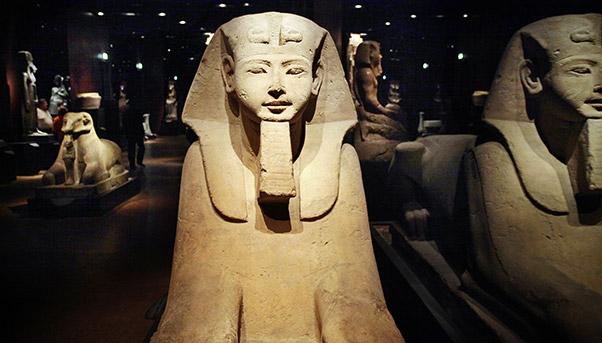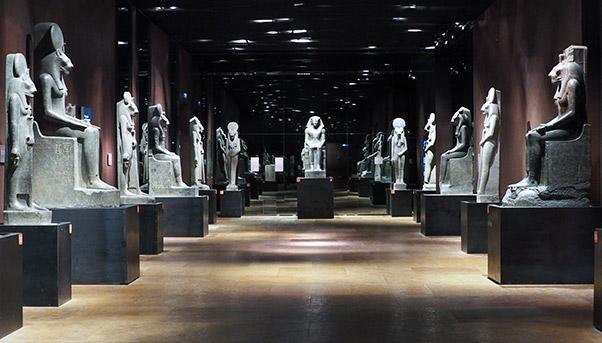
Fifty years since the rescue of the Abu Simbel temples, the Museo Egizio is hosting an event to commemorate the project. Why?
«The history of our museum is intertwined with the extraordinary rescue of the temples of Nubia. In the 1960s, the museum was called upon to contribute to the Nubian temple rescue campaign, under the aegis of UNESCO.
The Museo Egizio carried out the rescue of the temple of Ellesiya, built by Thutmose III and restored by Ramesse II. The temple was donated by Egypt and then rebuilt at the Museo Egizio».
The Museo Egizio of Turin is one of our country’s most prestigious museums. How is it commemorating the rescue anniversary?
«In addition to the publication of the book ’Nubiana’, we have repositioned the commemorative plaque in the museum marking the Egyptian government’s donation of the Ellesiya temple».
What would the loss of the priceless Abu Simbel temples have meant for Egyptian history?
«The temples of Abu Simbel and more generally the entire Nubian area belong to humanity. To lose these temples would have meant erasing this extraordinary testimony of Egyptian art for everyone, even for future generations. More than a symbol of the power of the pharaohs, these temples are also an expression of the technological know-how achieved in the time of Ramesse II».
What was the role of the Museo Egizio, and more generally of the Italian archaeological community, in the analysis of the Abu Simbel site before the rescue?
«In the 1960s, dozens of countries responded to UNESCO’s appeal to save the site, providing staff and funding. Some of them, including Italy, organised a series of archaeological campaigns coordinated by the Centre d’Étude et de Documentation sur l’Ancienne Egypte, exploring, excavating and recording areas that risked being submerged by the rising waters of the Nile after the construction of the Aswan High Dam.
The egyptologists of the Museo Egizio participated in some of the difficult expeditions in the Egyptian area of Nubia to document the sites that were destined to be submerged by the waters of Lake Nasser».

Who was Ramesse II and how is he represented in the museum?
«Ramesse II is probably the best-known pharaoh in the history of ancient Egypt and many items on display in the Museo Egizio are linked to him. In addition to the temple of Ellesiya, the best known monument is probably the tonalite statue exhibited today in the Gallery of Kings. Seeing it in Turin, French egyptologist Jean-Francois Champollion said: “The head is divine, the feet and hands admirable, the body soft; I call him the Apollo of the Egyptian Belvedere … in short, I’m in love” (liberal translation).
This innovative work shows an unusual characterisation of the face that seems to lean towards the spectator with a benevolent smile: it is like a god descended to earth, ready to listen to the supplications of the living.
Last but not least, we have burial items belonging to Queen Nefertari, the “great royal bride” of Ramesse II. During the 1904 excavations in the Valley of the Queens, archaeologists discovered her tomb, unfortunately already looted. But archaeologists did manage to find fragments of a pink granite sarcophagus and other funerary artifacts, many of them bearing the name of the deceased, and two mummified remains of human limbs».
Why were the Abu Simbel temples so important as to merit a rescue by an international task force?
«The temples of Abu Simbel and, more generally, the monuments of Nubia, are the expression of the peak of Egyptian power under the reign of Ramesse II.
The possibility of losing them caused a huge outcry at the time. The archaeological community worked very hard to spread the word and generate the international appeals for the rescue of these works».
What does Abu Simbel teach us today? Are art and culture always to be sacrificed in the name of progress?
«The rescue of the temples of Nubia was achieved by an international project that ran like clockwork. It has highlighted the site’s archaeological, historical and landscape value. The great temple of Abu Simbel is perhaps the most impressive building carved into rock in all of Ancient Egypt. It was commissioned by Pharaoh Ramesse II (1279-1213 B.C.), probably in the early years of his reign, in honour of the most important deities of this period, to celebrate his own deification».
Would the world today be capable of repeating a rescue like Abu Simbel?
«The museum wants to tell this story to today’s audiences, to remind people that big projects like this are possible. The museum plays a didactic role for new generations. It tries to display not only objects but also talk about the biography of the object, of which the museum and its activity is a part».
What is the legacy handed down to us by the people of Ancient Egypt?
«It is impossible to sum up what they have left us in just a few words. Certainly they had a great thirst for life, a profound respect for their own history, great spirituality, considerable technological skill, and the ability to interact effectively with a desert that was not always exactly hospitable».

